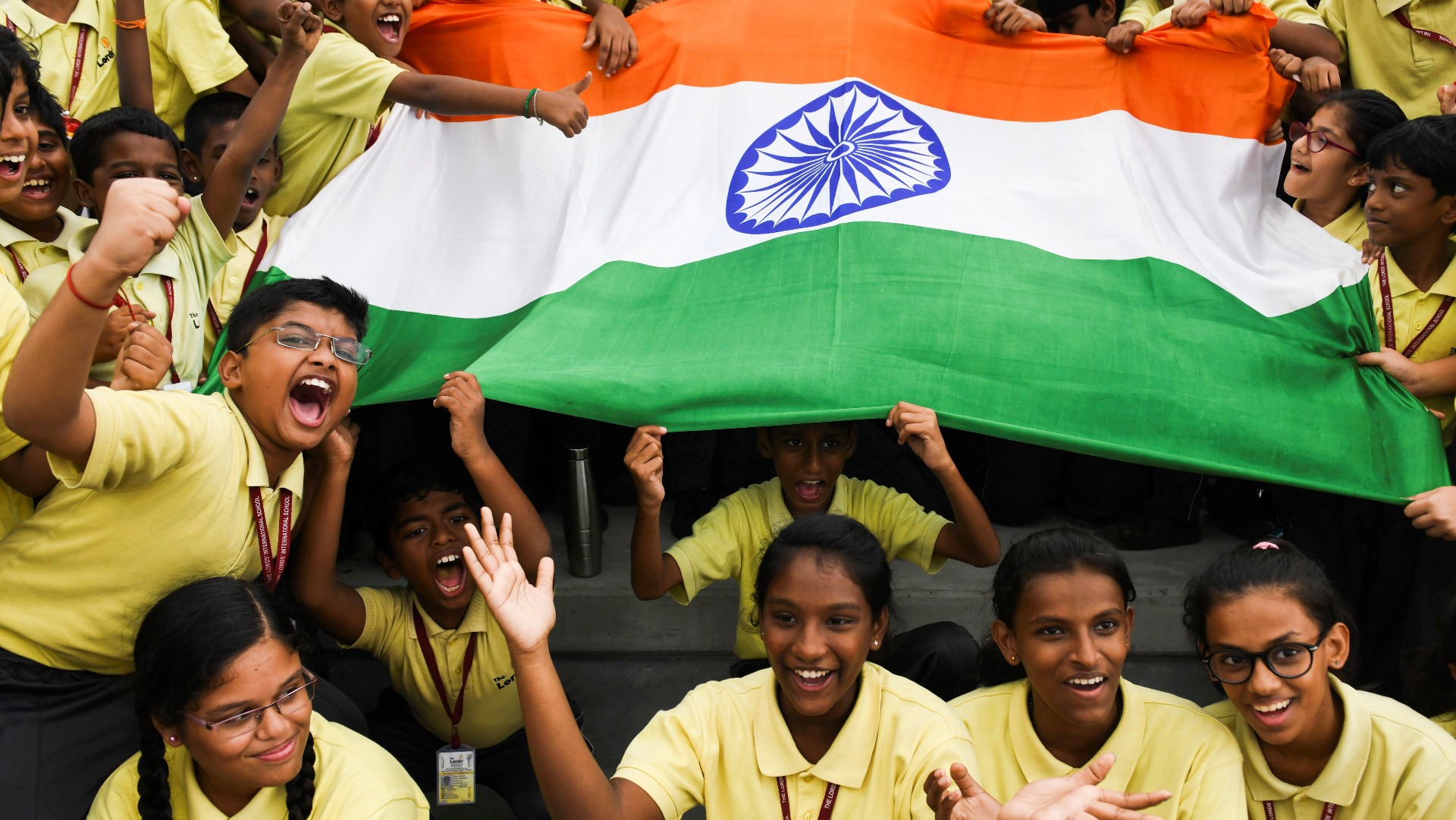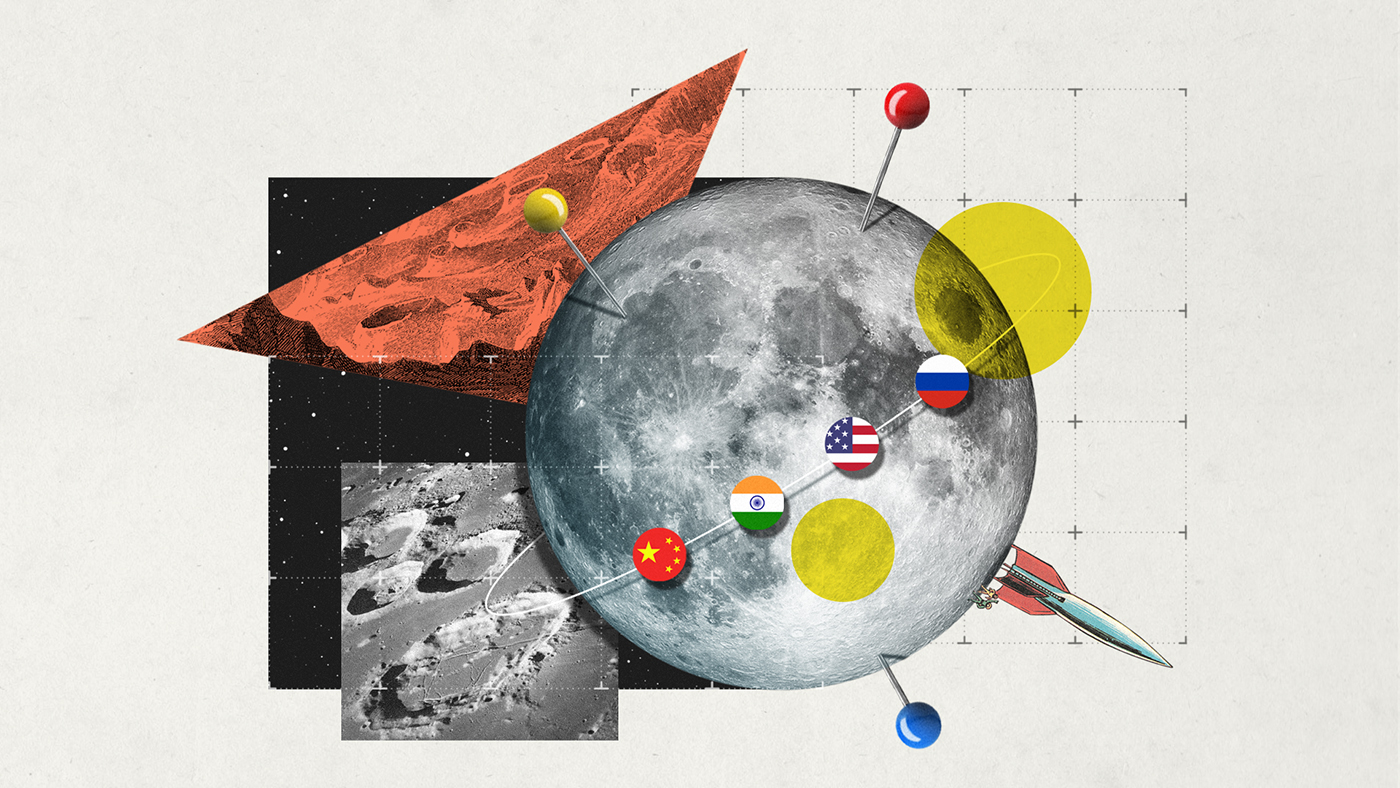How ‘underdog’ India beat rivals to the Moon
India’s arrival on the lunar surface has sparked mass celebrations across the nation

Only three nations – the US, Russia and China – have managed a safe “soft” landing on the Moon, and no country has done so at its south pole. Until now that is.
India’s Chandrayaan-3 spacecraft successfully touched down on 23 August, prompting mass celebrations across the country and only slightly hyperbolic statements from the country’s leader. It is, according to Prime Minister Narendra Modi, “a new chapter in India’s space odyssey” that would elevate “the dreams and ambitions of every Indian”.
How difficult was the mission?
Previous attempts to land in the Moon’s south pole region have all ended in failure. Just days before India’s remarkable achievement, Russia lost control of its Luna-25 spacecraft during its own most recent bid. India’s previous attempt, Chandrayaan-2, crashed in 2019, as did a private Japanese effort in April.
The Week
Escape your echo chamber. Get the facts behind the news, plus analysis from multiple perspectives.

Sign up for The Week's Free Newsletters
From our morning news briefing to a weekly Good News Newsletter, get the best of The Week delivered directly to your inbox.
From our morning news briefing to a weekly Good News Newsletter, get the best of The Week delivered directly to your inbox.
This high rate of failure is partly down to the very rough terrain of the south pole, where the ground is littered with craters. The Indian spacecraft landed roughly 370 miles from the south pole, at a latitude of 70 degrees south. That’s about as far south as the edge of Antarctica is on Earth. It’s a long way away from where previous historic landings have taken place – including the Apollo missions.
Yet India had learnt from past mistakes and had made several key adjustments to Chandrayaan-3, such as giving the lander sturdier legs. Engineers also added back-up systems to Chandrayaan-3, and carried out much more rigorous testing.
The result was a smooth landing, after the spacecraft dropped from thousands of miles an hour to walking pace, in a landing sequence that took about 19 minutes. “India did not just land its robot on the Moon,” said The Economist. “It did it with style.”
What does the mission hope to accomplish?
The spacecraft’s lander, named Vikram, will now deploy a rover, Pragyan, that will spend two weeks gathering rock samples, images and data. During the two-week period, the Sun will be on the landing site, providing enough energy for the solar-powered robots to carry out their work.
A free daily email with the biggest news stories of the day – and the best features from TheWeek.com
One of the most exciting aspects of the mission will be examining the Moon’s frozen water deposits, which have been discovered in its craters before. If it is found to exist in sufficient quantities and extracted, it could be a game-changer for future space exploration. It would mean fuel, oxygen and drinking water for astronauts and a possible staging post for deeper space exploration.
According to Sky News’s science and technology editor Tom Clarke, there could be a billion years’ worth of water stored in craters on the Moon, giving us insight into the evolution of the solar system.
India also claims there is the potential for discovering new ways of combating climate change. As part of the mission, the robots will study helium-3, a helium isotope found in abundance on the Moon that could serve as a renewable energy resource.
How significant is this?
The significance of the mission is “hard to overstate”, said Foreign Policy. “An aspiring power has achieved an unprecedented feat nearly 240,000 miles from Earth.” Landing on the Moon’s south pole is a feat that several countries – including Israel, Japan, Russia, and the United Arab Emirates – have not achieved. China is the only other nation to have landed on the Moon this century, although a new mission will be launched by Japan on 26 August. But India has succeeded and it is clear that this is part of the “South Asian giant’s diplomatic push as an ambitious power on the rise”, said The New York Times.
However, China’s space programme is “comfortably more advanced” than India’s, according to The Economist, and India’s achievement could be eclipsed by the US, which is hoping to send astronauts to the Moon later this decade. Despite this, the achievement will “do nothing to hurt Modi’s prospects as a voice abroad and a leader at home”, the publication said.
Does this mark the beginning of a new space race?
While it may be tempting to frame this feat as firing the gun on a new space race, some commentators have urged caution. According to the space writer Jatan Mehta: “This is not the cold war era. Budgets are finite enough to not risk expensive hardware being blown amid pursuits of trivial firsts and a slight edge at best.”
Yet India has also now signed up to the Artemis Accords, established by the US with the aim of promoting space cooperation – something China and Russia have pointedly refused to sign. As other countries jealously look on, India’s new space chapter “could certainly change the way those on Earth perceive the moon – and beyond”, said Foreign Policy.
-
 Pipe bombs: The end of a conspiracy theory?
Pipe bombs: The end of a conspiracy theory?Feature Despite Bongino and Bondi’s attempt at truth-telling, the MAGAverse is still convinced the Deep State is responsible
-
 The robot revolution
The robot revolutionFeature Advances in tech and AI are producing android machine workers. What will that mean for humans?
-
 Health: Will Kennedy dismantle U.S. immunization policy?
Health: Will Kennedy dismantle U.S. immunization policy?Feature ‘America’s vaccine playbook is being rewritten by people who don’t believe in them’
-
 Jeff Bezos, Elon Musk and the billionaire space race
Jeff Bezos, Elon Musk and the billionaire space raceThe Explainer Tesla CEO and Amazon founder vie for dominance of satellite launch market and could influence Nasa plans to return to Moon
-
 Dark side of the Moon: will the race to lunar South Pole spark conflict?
Dark side of the Moon: will the race to lunar South Pole spark conflict?Today's Big Question Russia and India are competing for the ‘new lunar gold’ – but real contest will be between the US and China